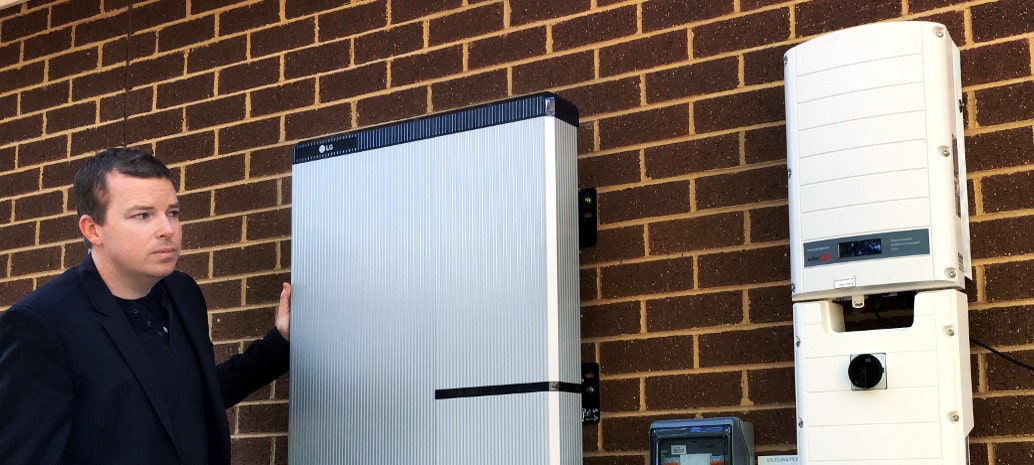From pv magazine USA
Attaching a solar array to a home is a long-term commitment, with many considerations, and one that offers great potential for energy bill savings. A recent addition to the list of options is whether or not to attach a battery energy storage system.
A battery can often add $10,000 or more to the total cost of a residential solar system, said EnergySage. But it comes with a range of benefits that vary depending on the home’s electricity needs and experience with the utility company. So, what are the benefits?
In part two of this two-part series, pv magazine reviews the capabilities of batteries beyond backup power, which was covered in part one, and evaluates costs, benefits, and timing.
Without a battery, a grid-tied home solar array will export any unused power directly to the grid in real-time. With a battery, electricity can be charged and discharged in ways that optimize energy bill savings.
Take demand charges, for instance. Some utilities, including providers in Massachusetts, Arizona, and Illinois, charge an additional fee based on the maximum amount of power required over a single hour, or 15-minute period, in a given month. A battery can be scheduled to discharge power during peak use times so that peak energy demand is smoothed, and demand charges are lower.
Utilities also use a billing design called time-of-use, which, similarly to demand charges, are intended to discourage power use during peak demand periods. For example, a utility may charge a lower rate of $0.15/kWh during off-peak hours, and then increase the rate to $0.32/kWh.
With a battery, the home is able to store energy during off-peak hours, which typically occur during the day when the solar array is producing the most. The battery can then export power to the home during on-peak hours, which are often in the evening as people return from work and run appliances and the array produces less power. Without a battery, homeowners are subject to whatever rate is being charged if the array is not actively producing.
A third benefit is the ability of the battery to provide value in utilities without net metering. Net metering is the process of exporting energy to the power grid in exchange for credits that can be used to offset utility bill costs.
Some utilities offer a one-to-one value, meaning each kWh of power sent out will cover one kWh of utility bill costs. Others have a decreased value for net metering.
For example, power may be billed by the utility at $0.16/kWh, but the value of exported energy only offers a credit value of $0.08/kWh. Other utilities offer no net metering credit whatsoever, like in Hawaii, where battery attachment rates are much higher than the rest of the United States at 80%. Again, in the net metering scenario, batteries are able to store and provide power, limiting exposure to the value loss in poor net metering climates.
Cost factors
A lithium-ion home battery comes with a sizeable price tag, usually around $10,000. Currently, energy storage that is paired with a residential solar system is eligible for the 26% federal investment tax credit.
Certain states and utilities offer additional incentives for including batteries, and in some cases the value adder can make a dramatic difference. The SMART program in Massachusetts, the Self-Generation Incentive Program (SGIP) of California, and incentive programs in Maryland and Long Island provide up-front cost relief for batteries.
Programs like ConnectedSolutions of New England offer further savings to homeowners who opt-in to a “bring-your-own-battery” program, wherein an incentive is paid to homeowner who agree to allow their batteries to export power to the grid during times of extreme peak demand.
In addition to the ticket-price of the battery, there may be hardware costs associated, as well. Tesla estimates supporting hardware for the battery costs $1,100, and installation will range from $800 to $2,000. Electrical work like a main panel upgrade may drive costs higher, and some installers will require the customer to cover costs like permit fees or retailer/connection charges, said EnergySage.
Retrofit later?
Bloomberg’s New Energy Finance reports lithium-ion battery pack prices have fallen 87% from 2010 to 2019. With global supply chains ramping up lithium production due to increased demand (also driven by electric vehicle adoption) it is possible that further price reductions may occur. But is it worth waiting for a cheaper battery?
The answer depends, but in the past, the cost of installing a battery after-the-fact, or “retrofitting”, is dependent on the inverters on the array, said EnergySage. Most home solar arrays are installed with AC-coupled inverters, which would then need to be re-converted by an additional inverter back to DC for use by the battery. This means a retrofitted battery would come with an additional cost of another inverter, plus installation costs.
A solar system with a battery included at initial install can include just one DC-coupled inverter, which reduces costs, and converts and stores energy more efficiently than AC-coupled solutions.
It should be taken under consideration that some installers do not perform battery retrofits altogether.
Inverter companies are actively working to make retrofits easier. For example, Enphase recently released a microinverter that the company said can be retrofit to any type of home energy storage battery without the need for recoupling.
This content is protected by copyright and may not be reused. If you want to cooperate with us and would like to reuse some of our content, please contact: editors@pv-magazine.com.




Consider your, electric, car as your integrated home energy storage battery 🤷🏻♂️